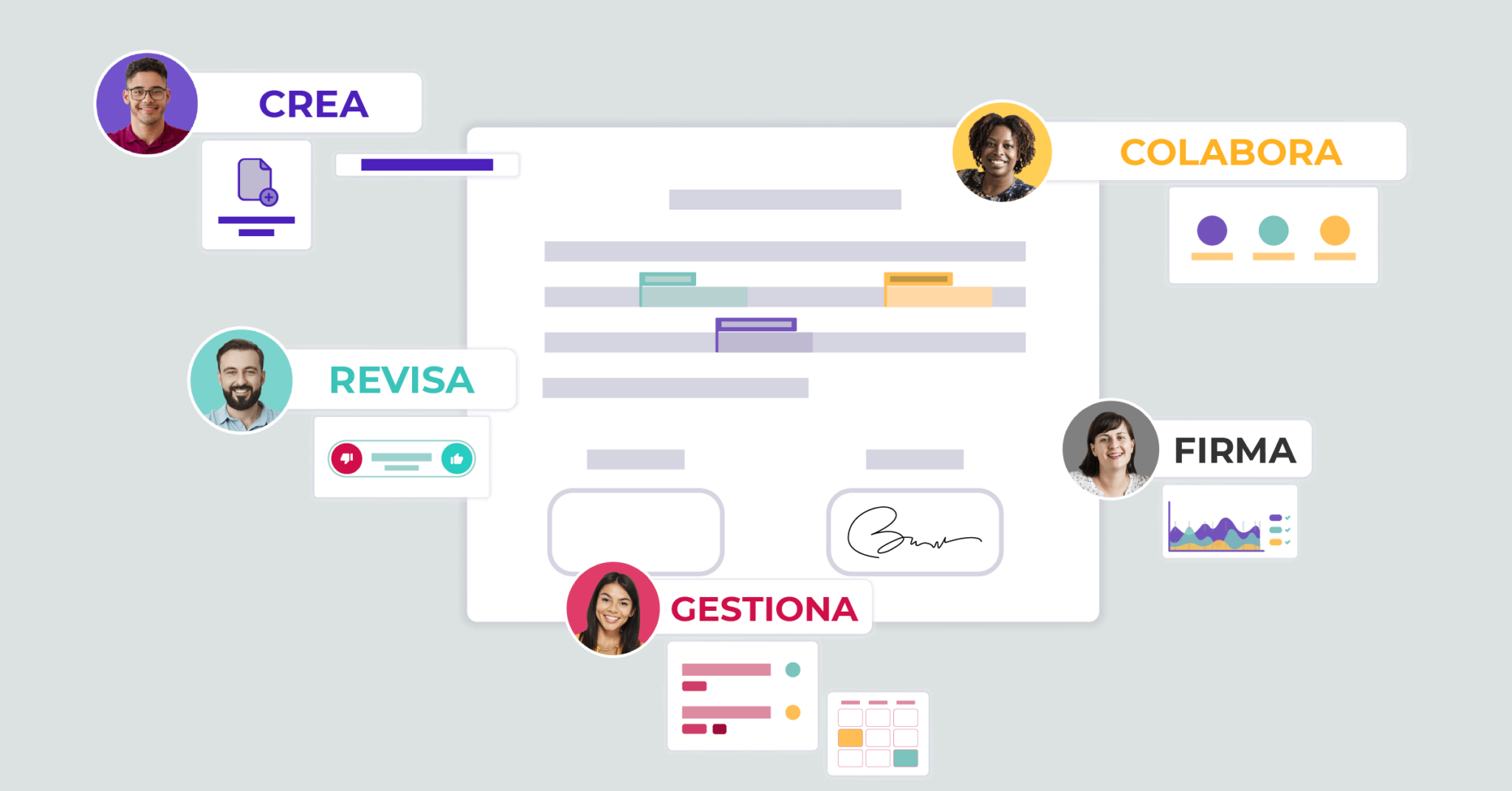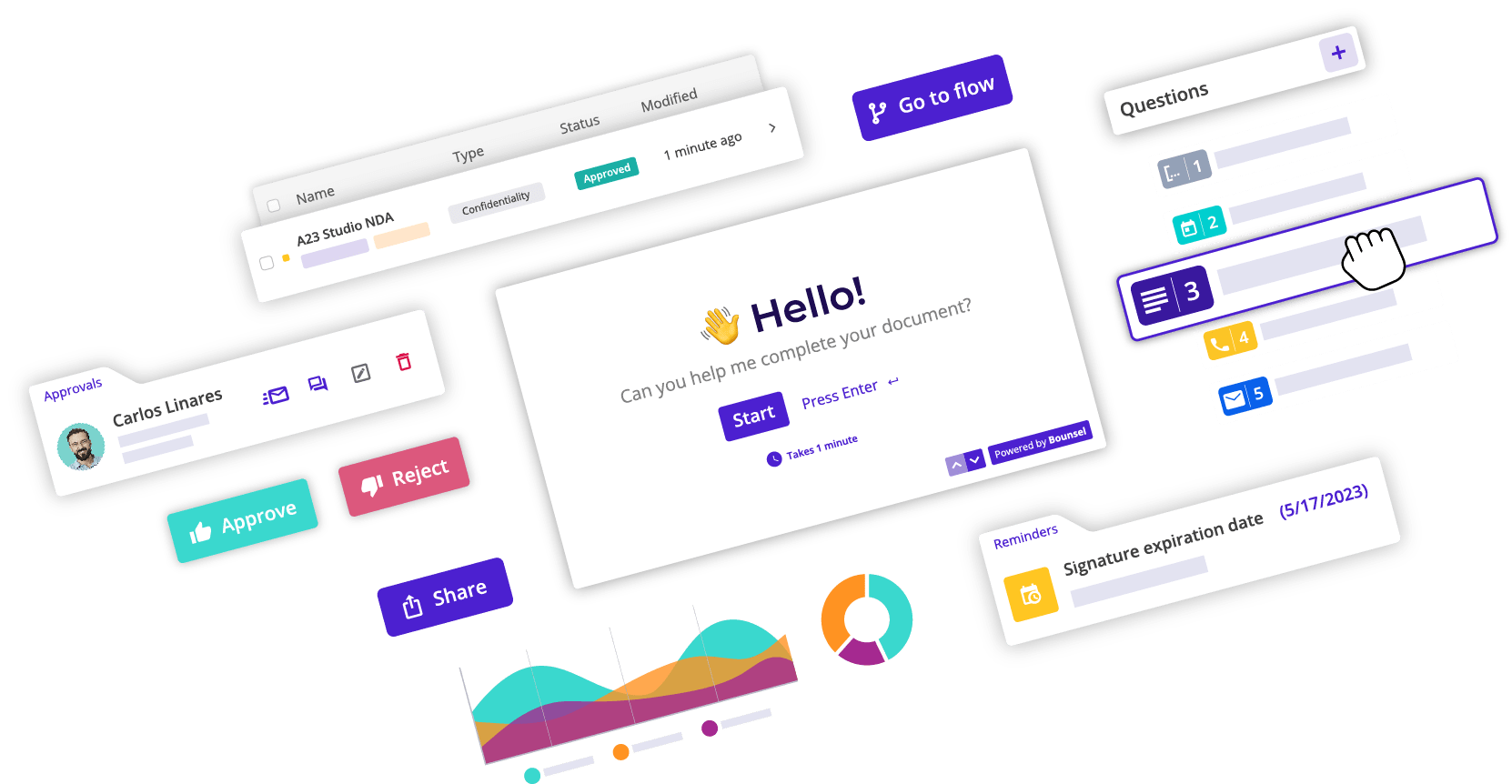The hegemonic way of managing a contract is through the use of traditional tools, such as Microsoft Word, e-mail, etc. This is a step in the digitalisation of the legal world to which we are already accustomed. But what if we could not only digitise, but also make the most of these processes?
For this we would need the help of legaltech. Let’s compare how contracts are created, sent and managed in a more traditional way and how they could be maximised with technology.
1. Traditional contract management process
The software typically used when using the hegemonic system is usually a text editing tool, such as Microsoft Word, and email to send the various documents, as well as an external communication channel such as a phone call, face-to-face meeting, video call, etc.
1.1. Creation in Microsoft Word
So let’s start with Microsoft Word. This text editing software is known worldwide and practically used by any user who needs to write or edit any piece of writing. When drawing up a contract, a number of requirements – clauses, conditions, etc. – must be met. – to be drafted, although the options provided by the software are unlimited.
This is why templates are often used. These templates are standard templates that also do not know the specific conditions of each case. This is why in many cases such clauses that differentiate a particular contract are not modified or added.
1.2. Email approvals and follow-up
Later, approval among lawyers. The professional who drafts the contract sends it to another professional via email. The latter reads it and sees that there are sections that need to be changed and/or negotiated, so he edits the document with the corresponding annotations and sends this new version of the document to the other lawyer. The latter reads the annotations, edits the document and sends it again. When the responsible person has given the go-ahead, it will be formally formalised and signed. This is assuming that both parties agree on the number of changes, that the different versions are not misplaced….
A cumbersome process, isn’t it?
1.3. Negotiation and management in person or by Email
So let’s get down to the negotiating part. Company and client – or employer and employee – may have to agree on certain conditions and negotiate them. For this they will have to make use of other means of communication, such as email, a phone call, a meeting, etc. Until the terms are clear and agreed, unnecessary versions of the document are generated and will remain drafts and serve no purpose other than to take up space and create confusion.
Once both parties have reached an agreement, it is time to sign. This process can be done in person, by signing on a physical piece of paper, or by signing the contract virtually, via Microsoft Word or Adobe Sign. The main problem is that it is not uniquely binding on the signatory and therefore lacks legal certainty. Moreover, both parties cannot sign the document at the same time online, but need other tools – such as email – to pass the document signed by one party to the other.
Finally, the whole process of contract management is quite complex. Either you have a strictly controlled order or haste can play a dirty trick, causing documents to be misplaced. It is difficult to keep track of the status of the document or the tasks assigned to the people involved.
It is clear that traditional processes are really costly and, although there have been steps forward and technological developments, it is possible to identify many areas where efficiency and productivity improvements are still needed. This is where legaltech comes in.
2. Automation and contract management
We understand automation as the digitisation of the customer’s journey through the contract, i.e. its creation, ordering, delivery, etc. As we have seen above, the traditional process is a costly and highly bureaucratic process. So the most feasible option to save time and mitigate risks is automation. This can save costs, as it increases the company’s productivity, and increase efficiency, as the time previously spent on these processes can now be invested in tasks that add more value to the business.
2.1. Example of legaltech application for contracts
One example of a legaltech tool that optimises these processes is Bounsel, a platform for automating and managing contracts in the cloud.
Firstly, templates created in Microsoft Word can be automated by automatically detecting variables and converting them into smart fields. These in turn can be transformed into questions (interactive forms). In this way, the drafting of contracts is quicker and simpler, with only the list of variables (dates, names, etc.) or the questions created from them having to be filled in. This is very useful in contracts that are very similar to each other or that need to be completed many times with different data. Furthermore, in order to make the software understandable, it is based on Legal Design, making its use more enjoyable and dynamic.
Another of the great ‘pros’ of this platform is that it is a collaborative platform. Bounsel gives us the opportunity to review and edit the document online, as if it were a Google Docs document. In addition, we are given the option to invite members, who can modify the document, make annotations and approve the conditions.
As far as the signature is concerned, there will be no need to travel to a specific location to sign it in person and no need to send a new version of the Microsoft Word document without sufficient legal certainty. Nor do we need an external application such as Adobe Sign. With Bounsel you not only have an electronic signature, but also an electronic stamp, which contains information about its date, from which device it was made, etc. And yes, the signature can be done from any electronic device: a computer, a mobile phone, a tablet, etc. Bounsel identifies the signatory to give the signature greater security and guarantee, with the help of Audit Trail, a document that certifies both the veracity and legality of the signature.
Finally, contract management. An overview shows the status of the document (pending signature, signed, etc.), which users are present, what the latest modifications have been and their date. Finally, it allows us to create reminders to avoid missing deadlines or relevant actions to ensure compliance.
Conclusion
If we want to add that extra innovation and efficiency to the legal world, we have to apply these new technologies and get used to using them. The results that contract automation will offer us as opposed to continuing to use methods that lack legaltech and are becoming increasingly obsolete, will be truly remarkable: heavy bureaucratic processes will be avoided and that time will be invested in increasing the company’s productivity and efficiency.












